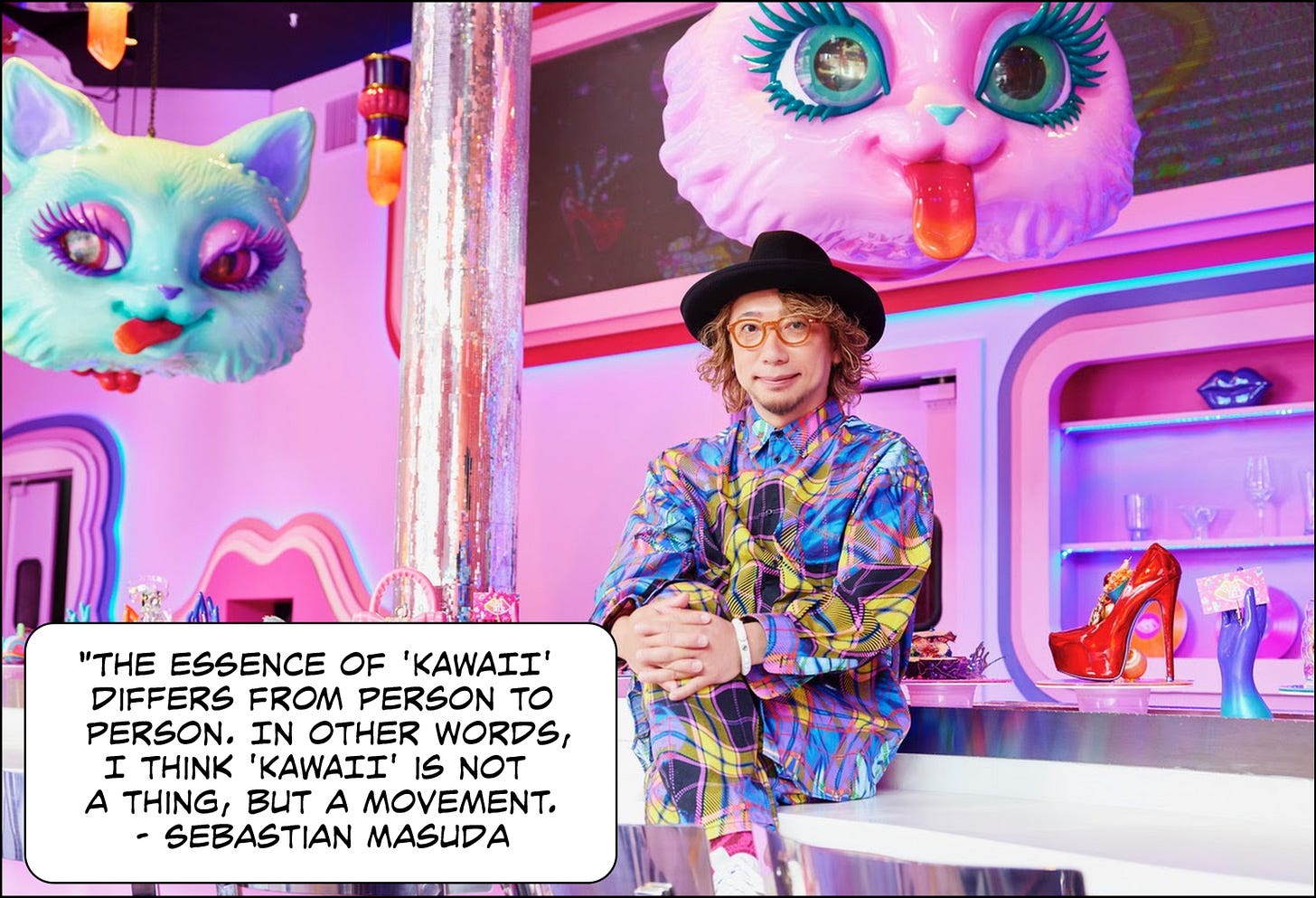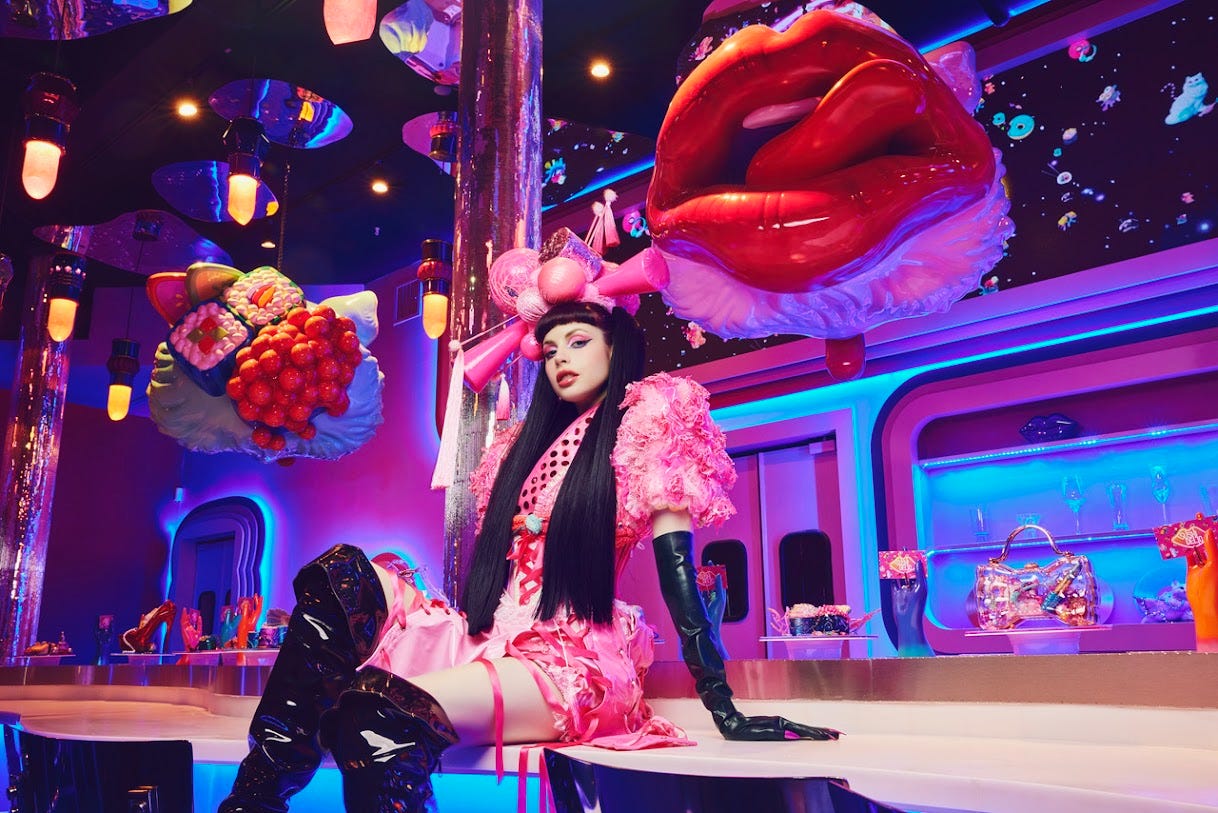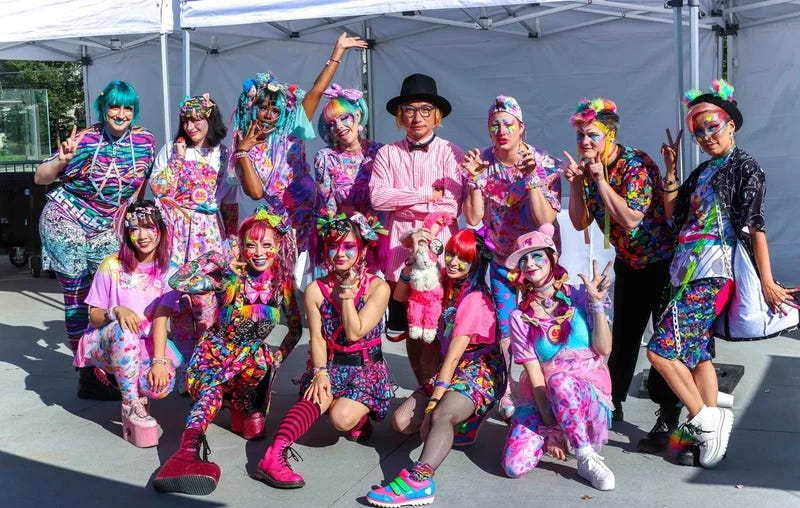TokyoScope INTERVIEW: Sebastian Masuda, SUSHIDELIC, and the Power of KAWAII!
A talk with the founder of a new psychedelic Japanese restaurant in Soho, NYC
Sebastian Masuda first opened the store known as 6%DOKIDOKI way back in 1995 during a pivotal time for Tokyo's Harajuku fashion scene. With its over-the-top colors and positive vibes, 6%DOKIDOKI quickly became a launching pad for the candy-coated extreme look of Japanese KAWAII fashion that eventually went global and entranced millions.
After making his mark in designing apparel, Sebastian moved into creating art and eventually theme restaurants, with the now-closed (but fondly remembered) KAWAII MONSTER CAFE in Tokyo.
Recently, Sebastian has gone next level with the opening of SUSHIDELIC, a new Japanese restaurant in New York's SoHo neighborhood that promises patrons an "immersive Kawaii experience" — effectively a slice of authentic Harajuku culture smack dab in a major American city.
It seemed like a good time to catch up with Sebastian to ask him a few questions about SUSHIDELIC and the state of KAWAII culture in general. So here we go…
TokyoScope: How would you describe the concept behind SUSHIDELIC?
Sebastian: The concept of SUSHIDELIC is Japanese cuisine × Entertainment. When you open a sushi restaurant overseas, it tends to be a conservative store with interior designs inspired by Japanese traditions and a chef making sushi. However, I thought we could provide a more entertaining presentation, so I made SUSHIDELIC a place where you can experience Japanese pop culture. SUSHIDELIC = SUSHI + Delicious, Psychedelic. It is about presenting a new version of sushi, which is traditional Japanese street food and a meal for special days, in a colorful art space that is characteristic of Tokyo. That is SUSHIDELIC.
Is SUSHIDELIC related to the old KAWAII MONSTER CAFÉ in any way? Are there any similarities or differences?
SUSHIDELIC has no direct connection to the KAWAII MONSTER CAFE, it is a new brand. A commonality is that they are both restaurants where you can have a food experience in my colorful art space, and some of the staff and creators who were involved in KAWAII MONSTER CAFE are also participating. The difference is that it's a restaurant that presents Japanese food culture and pop culture overseas. Not only food but the cocktails are made using Japanese-originated liquors such as sake and shochu. Above all, the biggest difference is that it opened in SoHo, New York, not in Tokyo.
I remember with KAWAII MONSTER CAFÉ, finding the staff (aka the Monster Girls) was a big event. How did you create the staff for SUSHIDELIC?
As with 6%DOKIDOKI and KAWAII MONSTER CAFE, iconic staff-like guides are an essential presence in my works. At SUSHIDELIC, in addition to regular staff, there are staff wearing original colorful costumes called "DELIC CAT". The DELIC CAT is a visual based on the three cats (Maneki-neko = Japanese beckoning cats) in the store, and we made a costume that is a fusion of traditional x Tokyo street fashion x club fashion elements.
KAWAII MONSTER CAFE was known for hosting events, shows, and sometimes even celebrity creatives. Do you have plans to bring Japanese artists, dancers, or other celebrities from Japan for special events at the New York restaurant?
Originally, KAWAII culture from Japan expanded to the world by integrating with local cultures in various countries. In this store too, since we are set up to have DJ events and private parties, we hope to enjoy a mix of Tokyo and New York cultures.
Any plans for a US West Coast or Tokyo location of SUSHIDELIC?
It seems that the SUSHIDELIC team is thinking about various fun plans, so I'm also looking forward to it. I would be happy to create many places where you can experience food and culture in art works in various cities around the world in the future.
What are some of the challenges involved with operating a Japanese KAWAII culture business in America?
I think it's whether or not you can have a big vision that can entertain many different kinds of people who love Japanese pop culture. Since I moved to New York, I strongly feel that I am an artist with a backbone of Japanese culture, and I want to surprise the world with my works and give a lot of people a shock. It's the same in art, fashion, and entertainment, and I feel that a store can be used like a stage where you can fully experience the work using all five senses.
I know you’ve been going back and forth between Japan and the USA over the last few years. Do you have any thoughts on how Japanese pop culture has changed, or is changing, since the pandemic began?
2009 and 2010 was when we opened pop-up shops for 6%DOKIDOKI in various cities, including San Francisco, and held fashion shows and events. Despite the fact that the only publicity tools at the time were Myspace and Facebook, many people came rushing in. And speaking in my own words and interacting directly with the local community had a great response. I moved to New York in 2022 and that was because I wanted to be active anywhere in the world. It was something I had been preparing for a long time.
I once declared that "HARAJUKU already exists all over the world", and the KAWAII community is growing over time as generations change, so I don't think that has changed. However, the changes that occurred in the Coronavirus disaster from 2020 to 2022 were significant. First, by holding a small online talks called "KAWAII TRIBE SESSION" with KAWAII communities in America, Canada, UK, France, Mexico, Bolivia, Israel, and Korea, I was able to talk to communities in cities where I had never been able to go before. And I was able to have them tell me directly how much Japanese pop culture has become a mental pillar in their lives and made them stronger.
At that time, we believed that we were forming something like a tribe through digital means, regardless of borders, age, gender, race, or religion, because "we have roots in the same culture". I think this is a phenomenon that is happening in various scenes, not just KAWAII, but also manga, anime, games, etc., and I call it "DIGITAL TRIBES". I think it was a big event that the existence of these TRIBES became apparent due to the pandemic.
You’ve often talked and written about how you believe that Japanese KAWAII culture can save the world. Do you still think that’s possible?
The essence of "KAWAII" is to create a microcosm within oneself. It's the philosophy of "This is something I won't give up, this is my own original style". What I've done tends to be picked up, so people tend to imagine KAWAII = colorful things, but in fact, any image is good. What constitutes a person's microcosm is free. The meaning of "KAWAII" differs from person to person, and it's good that it differs. In the past, everything came down from the top-down from authority, and the value of things was determined that way. But now, with the spread of SNS, if there are a million people, there are a million "likes!", and movements that change the world from SNS are emerging. I think the essence of "KAWAII" activities lies there. In other words, I think "KAWAII" is not a thing, but a movement. "My this is good, but your that is also good." I think the first step towards peace is to accept each other's values in this way.
Do you have any message for people who will go to SUSHIDELIC or who would like to go?
We've only been open for a month, but I hear about 3,000 people are waiting for reservations. I think it will evolve daily, so please come and experience it for the first time.
Finally, do you have a favorite item on the menu at SUSHIDELIC?
I guess it would be macaron sushi. Not only does it look cute, but its sweet and salty taste is addictive, so I recommend it.










